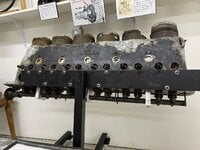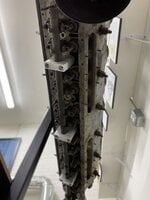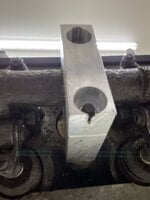Larrythepilot
Airman 1st Class
I'm back from the Freeman Army Airfield Museum seeking some additional information. Our president was doing some reorganization in what we call the "dig room", where we have parts that were buried in the late 40s, and dug up in the late 90s, but have not yet been cleaned up or identified. He came upon a whole lot of engine valves, so let's start there. There are 2 different types, with different dimensions, but the stem shape suggests they are related. There are 8 of one type and 11 of the other. Probably intake and exhaust. Since we have one cylinder head for the 601, I'm guessing these valves are from that engine. 24 valves (12 of each) would be a complete set. The most noticeable difference between the 2 valves is the diameter of the stem. One is 14mm; the other is 16mm. The 14mm stem one is about 123mm long, and has a head diameter of 55mm, and has the number 4 stamped into the face of the valve. See pictures. The 16mm stem valve is 121mm long and the head diameter is a little smaller at 51.7mm. There is nothing stamped into the valve face. It didn't clean up as well, leading me to believe it is probably the exhaust valve. At the stem end, in the level just before the stem goes to the full 16mm diameter, it is stamped with the letters CV, then what looks like an inspection stamp, followed by A031. The 14mm stem valve has no markings, other than the 4 in the face. So, Engineman, are these DB-601 valves, or am I barking up the wrong tree?
While on the subject of the DB-601, we finally got our one cylinder bank on a stand, and oriented properly (half of an inverted V). A picture of the whole display is included. The cylinder bank has a whole lot of markings cast into the side. I took a closer picture of that portion. Do all those letters and numbers tell us anything more about the engine?
The last item probably has nothing at all to do with the DB-601 engine. It is what appears to be a stamped aluminum cover of some sort. It is about 10-inches by 10 inches by 2.5" deep, and has a very nice data plate attached. I took a picture of the data plate in macro mode. As nearly as I can tell, the first line says Balmuster RG. 10 a, the 2nd line Werk Nr 20751-40, and the third is is an oval logo that says LORENZ, followed by Anf. Z. Ln 26579. I'm not sure if the last character in the first line is a lower case "a" or not, but that's the best I can do, even with a magnifying glass. What does the cover go on?
That's it for this evening. Thank you for your help. ----- Larry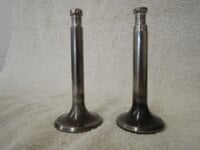
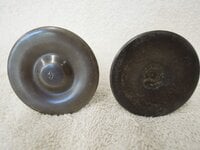
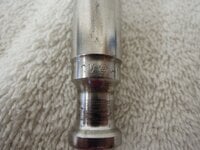
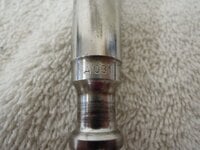
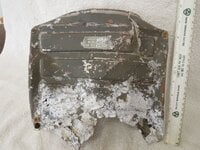
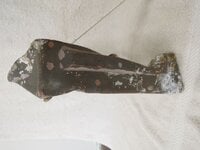
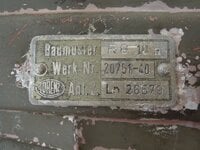
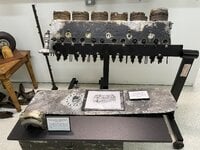
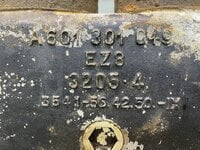
While on the subject of the DB-601, we finally got our one cylinder bank on a stand, and oriented properly (half of an inverted V). A picture of the whole display is included. The cylinder bank has a whole lot of markings cast into the side. I took a closer picture of that portion. Do all those letters and numbers tell us anything more about the engine?
The last item probably has nothing at all to do with the DB-601 engine. It is what appears to be a stamped aluminum cover of some sort. It is about 10-inches by 10 inches by 2.5" deep, and has a very nice data plate attached. I took a picture of the data plate in macro mode. As nearly as I can tell, the first line says Balmuster RG. 10 a, the 2nd line Werk Nr 20751-40, and the third is is an oval logo that says LORENZ, followed by Anf. Z. Ln 26579. I'm not sure if the last character in the first line is a lower case "a" or not, but that's the best I can do, even with a magnifying glass. What does the cover go on?
That's it for this evening. Thank you for your help. ----- Larry











